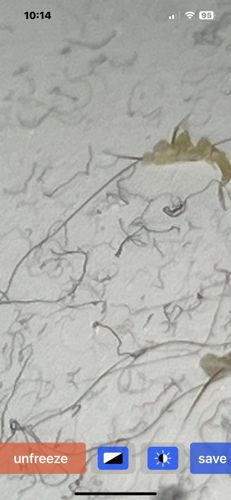Human Head Louse
Scientific Name: Pediculus humanus capitis
Order & Family: Phthiraptera, Pediculidae
Size: Adults: approximately 2-3 mm in length. Nits: about 0.8 mm in length.

Natural Habitat
Exclusively on the human scalp and hair.
Diet & Feeding
Human blood (obligate hematophagous parasite)
Behavior Patterns
Head lice spend their entire life cycle on the human scalp, feeding on blood. They spread primarily through direct head-to-head contact. Nits (eggs) are laid on hair shafts close to the scalp and hatch in about 7-10 days. Nymphs mature into adults in about another 7-10 days. Adults live for about 3-4 weeks. They are largely inactive off a host.
Risks & Benefits
Potential risks include intense itching, skin irritation, and secondary bacterial infections from scratching. Despite common misconceptions, head lice are not known to transmit diseases to humans. They do not offer significant benefits to the ecosystem.
Identified on: 8/27/2025